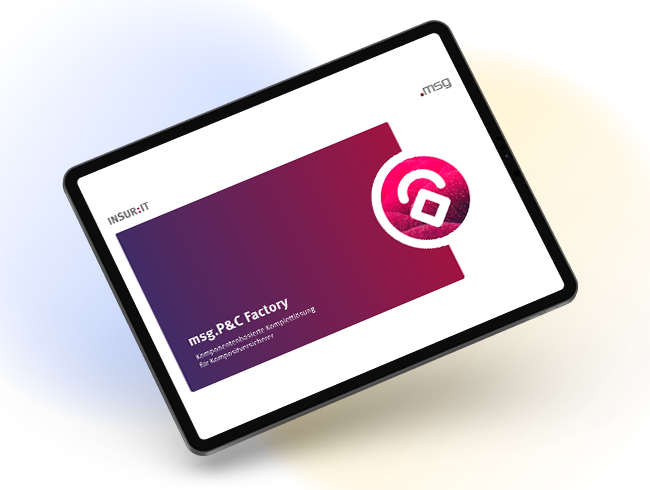New offers must be available to customers quickly (Point of Service), added to and calculated in internal applications (in tariffing, quotation and application) and appear on comparison websites quickly and prominently. As the practical example shows, dynamic product development constitutes a decisive competitive advantage – the more so as the insurance sector is increasingly focused on meeting the needs of customers, and this includes custom-fit products. However, product management must also be stable and future-proof. In other words, a new tariff must be completely integrated into the end-to-end process and available to customers without delay, yet also fully mapped in the backend without additional effort.
Why product centricity is essential in P&C insurance

Executive summary
In 2020 a new player entered the insurance market: the Covid-19 pandemic quickly changed the demand for certain products and altered risk issues. The crisis made it very clear how important it is for insurers to be able to adapt products, prices and risk assessments with both speed and flexibility. As an example, the pandemic caused the level of demand for business interruption insurance to skyrocket.

Success due to the right software architecture: a product-centric approach for individual customer demands
For the core system to have broad professional coverage and modern technological principles to take effect in practice, it is vital to think in terms of the product as early as the software design stage. An insurance product that is offered to customers with speed and flexibility, that meets current needs and is made available on all necessary distribution channels creates a great competitive advantage.
So, it is only logical for the product management system already to play a key role in the design phase, and to be supported as effectively as possible by a component-based architecture in an consistent ‘product-centric approach’. All relevant product information is stored centrally and is sent from there to the policy management and point of service systems, as well as the claims application. Not only does this allow for accelerated product modelling by the specialist department, but it also minimises the amount of programming work needed to adapt or develop new insurance products, enabling insurers to react to market requirements much more quickly. Brokers and comparison websites are connected digitally on a modern basis. Standardised BiPRO tariffing and application submission services provide sales partners with lean, automated processes. This enables insurers to offer customers individual insurance cover – calculated from millions of possible combinations. In all stages of the process, customers have complete transparency about their premiums. If, for example, the advisor changes the coverage amount, excess or adds additional modules, the effect on the premiums will be visible instantly.
A system like this that, for instance, is based on the services of msg.P&C Factory, executes all processes automatically and normally generates the application acceptance confirmation directly on site. With open interfaces, the system’s functionalities are even available externally. An insurer can add new apps, accelerate customer processes, and integrate services from other providers at any time, which enables them to overcome the challenges of digitalisation.

A product-centric approach also creates opportunities to optimise the dialogue at the point of service for a flawless user experience. It is important to only offer what is valid in the sales dialogue for a product. Programming fixed selection options greatly restricts flexibility – it is better to formalise rules and apply them dynamically in a product-centric approach. In this way, only relevant offers are made, and the corresponding information comes straight from the product core. Thus, the system remains completely flexible from end to end. Otherwise, if customers make ‘invalid’ selections, they might quit the sales dialogue in frustration if an error message appears. In case the system does not notice that a selection is invalid, then inaccurate data will end up in the policy database. This in turn requires time-consuming manual corrections or even enquiries by case handlers – both of which insurers want to avoid for the sake of efficiency and costs. Linked directly to the product core, this rule-based – not programmed – approach allows for selection options that are always valid in a direct dialogue with the customer, which makes a rule-based user experience beneficial for both sides.



